Your Ultimate Guide to Making Perfect Elderflower Cordial
You know that moment in late spring when you walk past a hedgerow and the air just smells… sweet? That’s the magic of elderflower. For years, I’ve been obsessed with capturing that incredible scent in a bottle, and trust me, it’s simpler than you think. But it’s a process where the little details make all the difference between a stunning, fragrant cordial and a bottle of disappointment.
In this article
So, this is more than just a recipe. It’s a complete game plan based on tons of experience—the kind of practical know-how that gets passed from one pro to another. We’ll cover everything from finding the right tree (and avoiding its nasty cousins) to the best way to harvest and turn those delicate blossoms into liquid gold. Let’s get it right.
First Things First: Finding the Right Tree
Before you get your basket out, you have to be 100% certain you’ve got the right plant. We’re looking for the common elder, a big shrub or small tree that loves to hang out in hedgerows and along the edges of woods. But it has some dangerous look-alikes, so this step is non-negotiable.
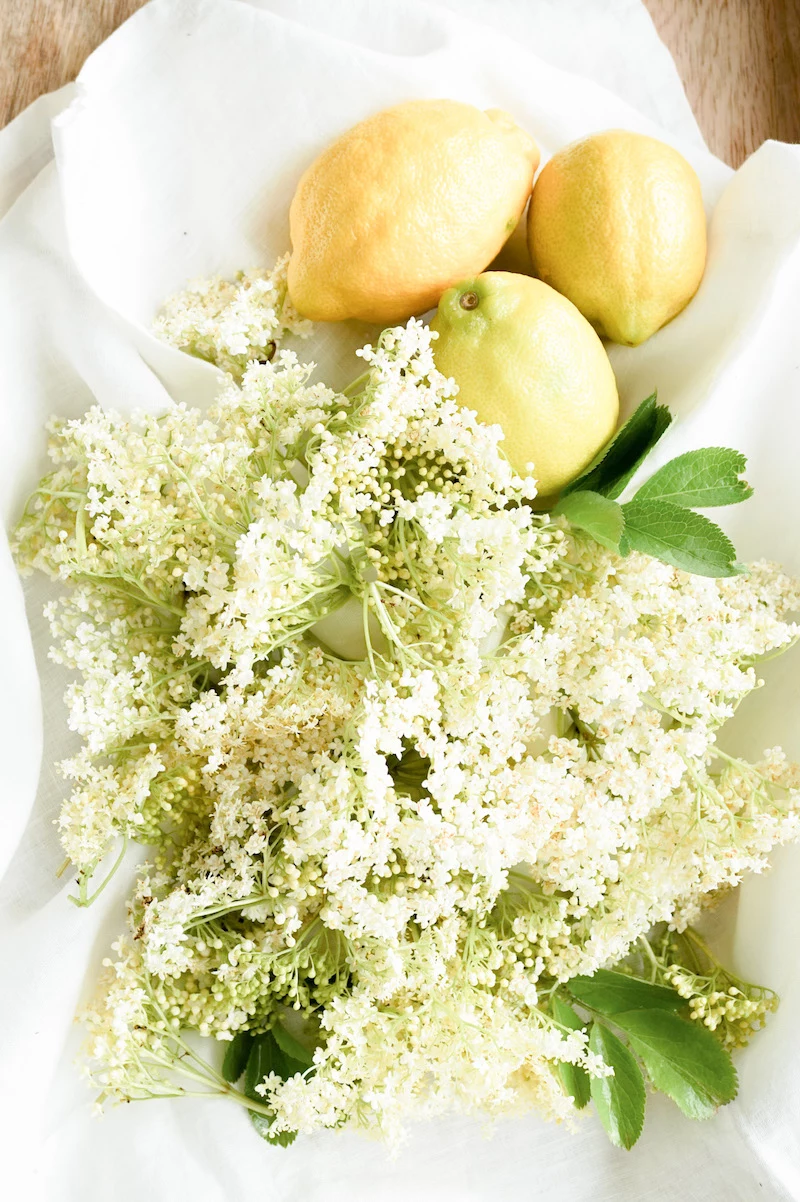
Here’s what to look for with the common elder:
- The Leaves: Each leaf is actually a cluster of 5 to 7 smaller leaflets. They grow in pairs with a single one at the very tip, and the edges are serrated like a little saw. Quick tip: Crush a leaflet between your fingers. If it has a sharp, almost unpleasant smell, that’s a good sign it’s elder.
- The Bark: Younger branches have light grey-brown bark dotted with little bumps. On older, gnarlier trunks, the bark gets rough and deeply furrowed.
- The Flowers: This is your biggest clue. The flowers are tiny, creamy-white, five-petaled, and they grow in huge, flat-topped clusters that look like lacy plates. Some can be up to 8 inches across! And that smell? It’s a sweet, summery perfume you can’t mistake.
Heads Up! Dangerous Look-Alikes
I can’t stress this enough: your safety relies on getting this right. A couple of toxic plants can fool the untrained eye, and the consequences are serious.

Giant Hogweed is one to watch out for. From a distance, its flower clusters can look similar, but it’s a much larger, more menacing plant. Its sap is the real danger—it can cause horrible skin burns and blisters if it gets on your skin and is then exposed to sunlight. Another one is Water Hemlock, which is extremely poisonous and often grows in the same damp spots. The key difference is that hemlock’s flower clusters are smaller and more rounded, not the big, flat plates of elder.
Honestly, my rule is simple: if you have any doubt, don’t pick it. Grab a good foraging guide for your area or, even better, go with a friend who knows their stuff the first time. No drink is worth that kind of risk.
The Simple Science of Great Flavor
Knowing a little bit about why things work helps you make better cordial. The magic of elderflower really comes down to two things: its amazing scent and that golden pollen.
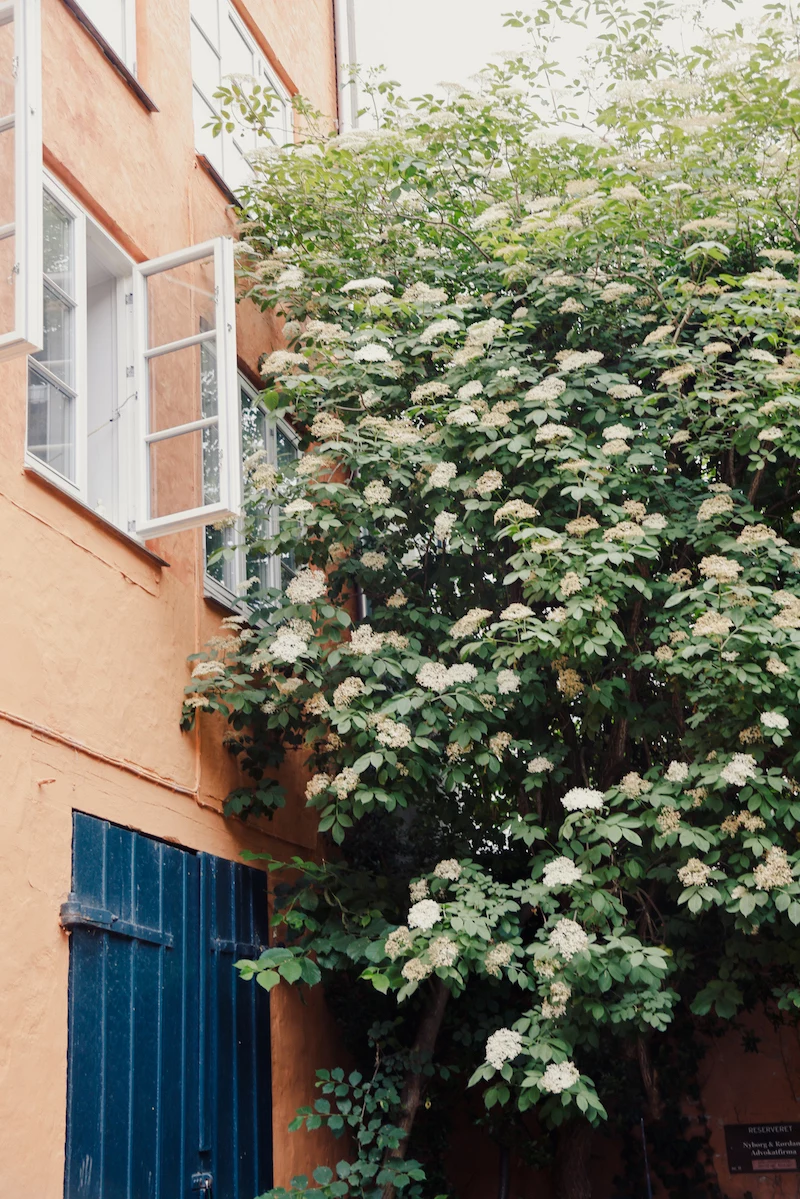
The fragrance comes from super-light molecules that easily float into the air. Heat and sun make them more active, which is why the flowers smell strongest on a warm morning. These are the same compounds that give the cordial its flavor, but they’re fragile. If you overheat them or handle them too roughly, poof—they’re gone.
The pollen is just as critical. It’s that fine yellow dust you’ll see covering the flower heads, and it’s packed with flavor and natural yeasts. This is why you should never, ever wash elderflowers. Rinsing them sends all that pollen and nectar right down the drain, taking the flavor with it.
By the way, the secret to making your cordial last is a tag team of sugar and acid. Sugar works by basically locking up the water, making it impossible for bacteria and mold to grow. The acid (from lemons or citric acid) lowers the pH, creating a hostile environment for nasty microorganisms. It’s this combination that makes your cordial safe to store.
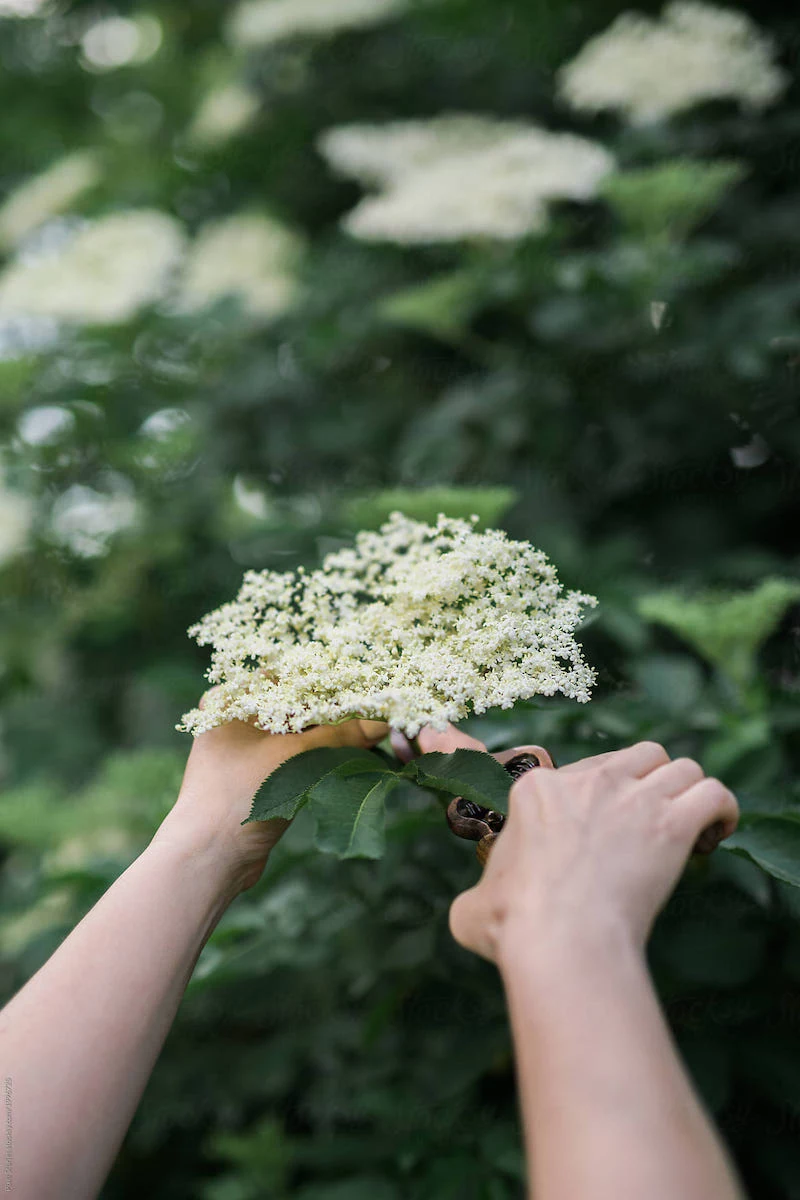
How to Harvest Like a Pro
The way you pick the flowers directly impacts your final product. This isn’t just about grabbing a handful; it’s about timing and technique.
When to Pick
Timing is everything. You’re looking for that perfect window: a dry, sunny morning. A bit of sun helps the flowers open up and release their nectar, but you want to get them before the intense midday heat bakes away all those fragrant oils. If it rained yesterday, give it a day. Rain washes away that precious pollen.
Look for flower heads that are fully open and creamy-white. Picture this: a perfect head is a lush, full plate of flowers, so loaded with pollen that a gentle tap sends a little yellow cloud into the air. Now, picture the opposite: a sad-looking one with brown-tinged edges and noticeable gaps where flowers have already fallen off. That one’s past its prime—leave it be.
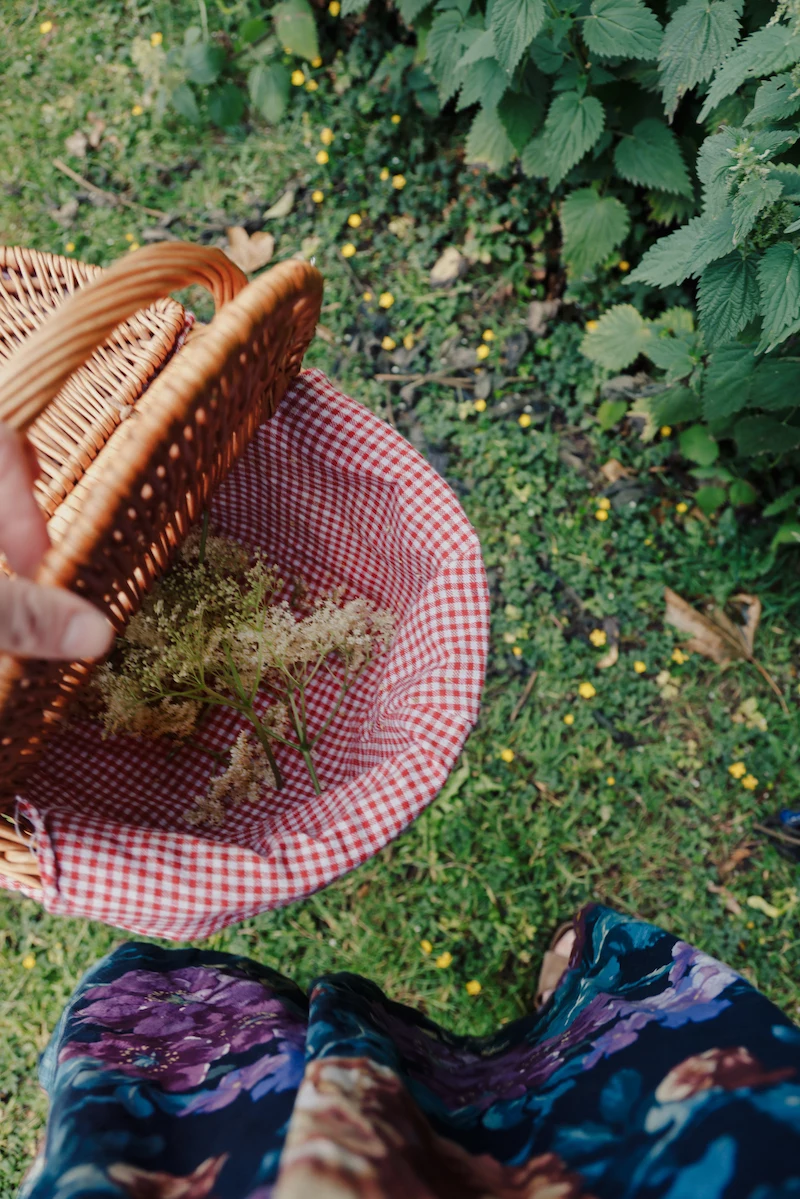
Where to Pick
Be smart about your location. Forage far, far away from busy roads. Exhaust fumes contain pollutants that can settle on the flowers, and you definitely don’t want that in your drink. I always make sure I’m at least 50 yards from any significant traffic.
And please, forage ethically. Never strip an entire tree. A good rule of thumb is to take no more than a third of the flowers from any one plant. This leaves plenty for the bees and ensures the tree can produce elderberries later, which are a vital food source for birds. Oh, and always get permission if you’re on private land!
The Right Tools for the Job
A sharp pair of scissors will give you a clean cut and is much kinder to the plant than tearing the stems. Cut the flower head with an inch or two of stalk attached, which gives you a handy little handle.
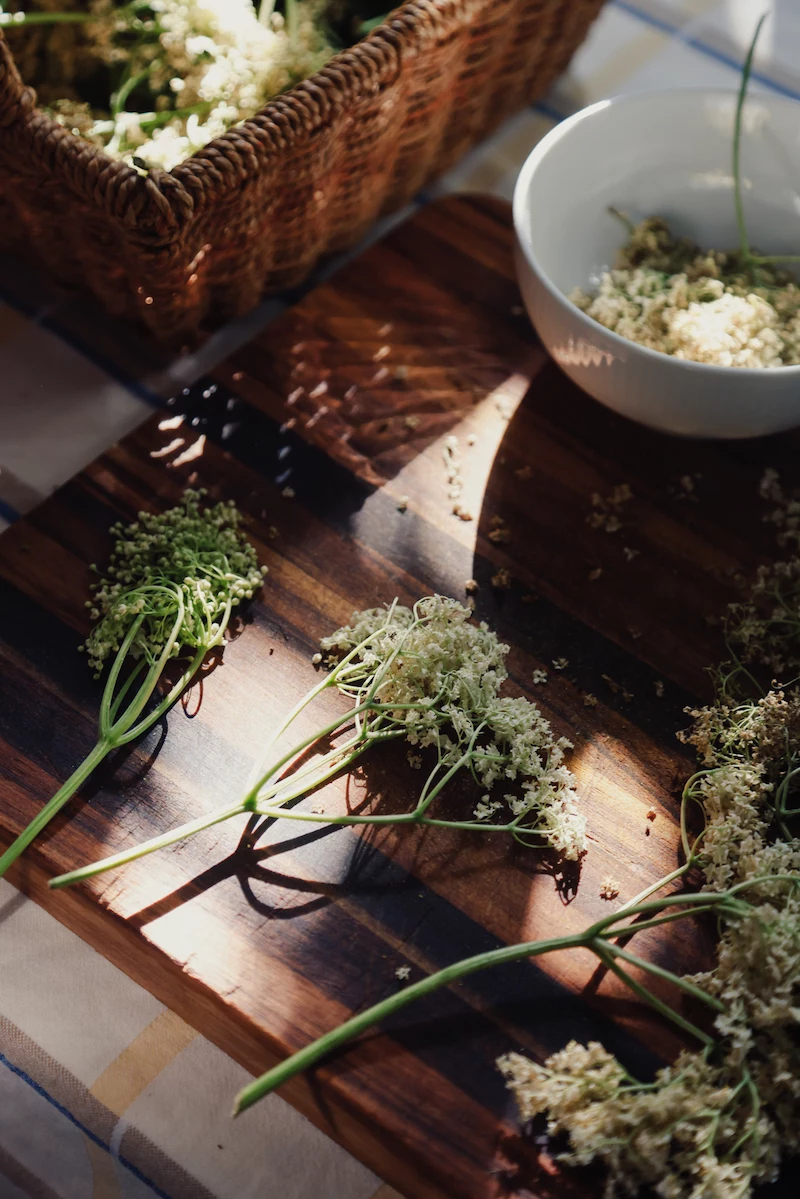
As you gather them, gently place each flower head upside down in your basket. This simple trick helps keep the pollen from falling out. Don’t cram them in; you want them to arrive in the kitchen looking as pristine as they did on the tree. Once home, I like to lay them out on a white sheet for an hour or so. This gives any tiny bugs a chance to crawl out and go about their day. Give them a final, gentle shake before you start.
The Classic Elderflower Cordial Recipe
Okay, let’s talk timeline. You’re looking at a two-day project, but don’t worry—most of that is just letting it sit and do its thing. Plan on about two hours of active work for foraging, prep, and bottling, with a 24 to 48-hour steeping period in between. This cold-infusion method takes patience, but it delivers the absolute best, clearest, and freshest-tasting cordial.
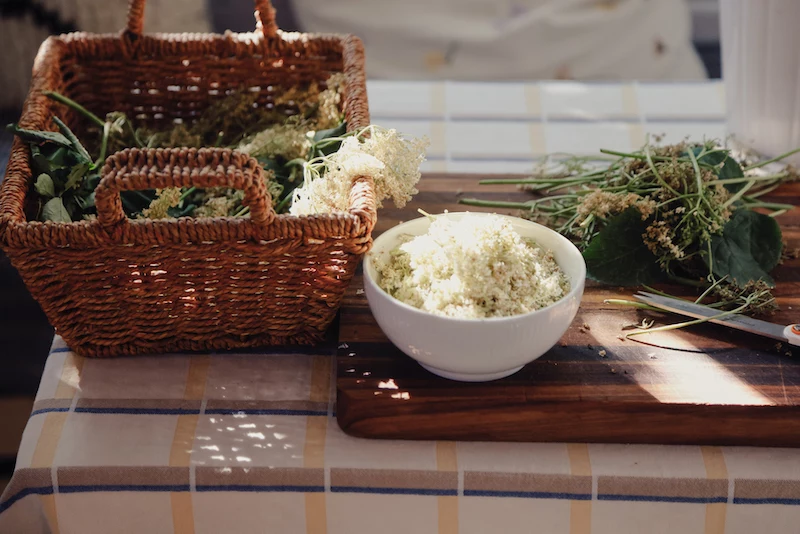
What You’ll Need:
- A large, non-reactive pot (stainless steel is perfect). Avoid aluminum, as it can react with the acid and give your cordial a metallic taste.
- A fine-mesh sieve and some clean muslin cloth (or a jelly bag).
- Sterilized glass bottles with good, tight-fitting lids.
- About 25-30 large elderflower heads, freshly picked.
- 1 kg (about 2.2 lbs) of granulated white sugar.
- 1.5 liters (about 6.3 cups) of water.
- 2 large lemons.
- 50g (about 1.8 oz) of citric acid. Good to know: You can find this in the baking or canning aisle at most supermarkets, sometimes called ‘sour salt.’ It’s a cheap but crucial preservative, usually costing just $3-$5 for a small tub.
Step 1: Make and Cool the Syrup
In your pot, combine the sugar and water. Heat it gently, stirring until the sugar is completely dissolved—no grittiness on the bottom. Bring it to a boil, then immediately turn off the heat and let it cool down completely. And I mean completely. Trust me on this. I once rushed it and added the flowers to warm syrup, and the whole batch had a disappointing ‘cooked cabbage’ vibe instead of that fresh floral scent. A lesson you only need to learn once!
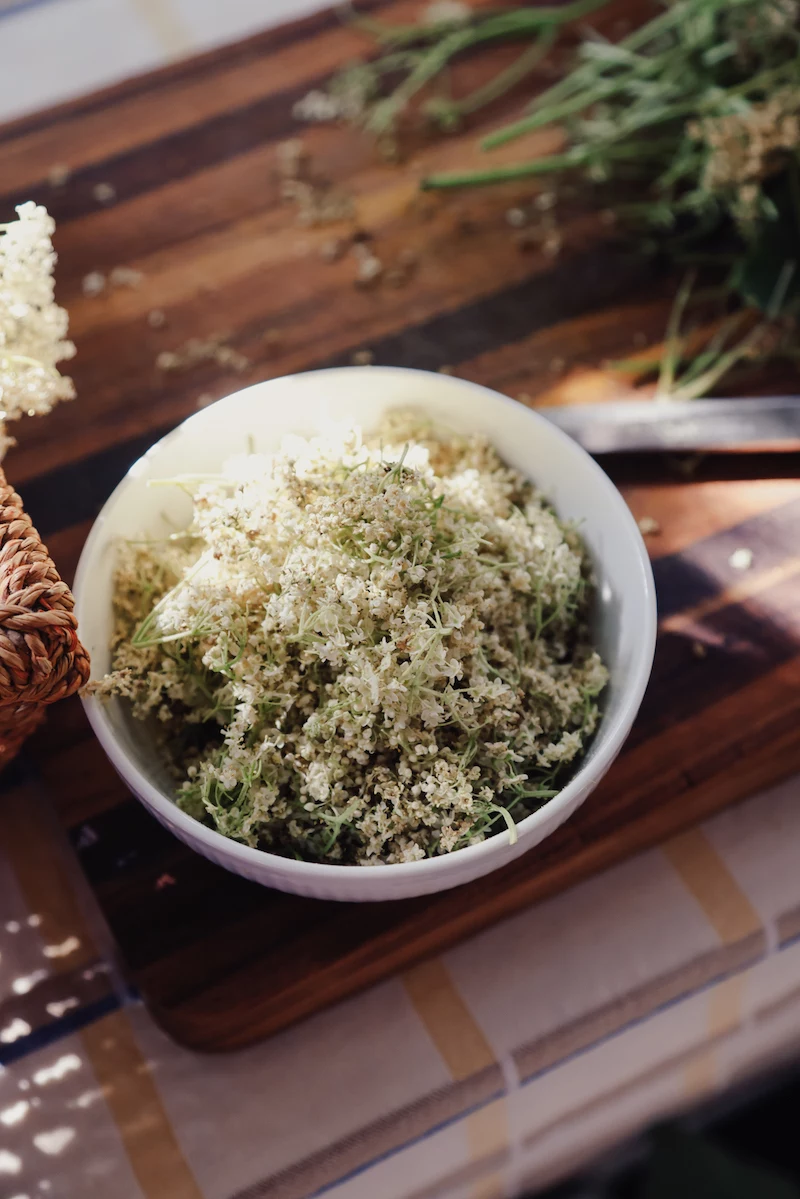
Step 2: Prep the Flowers & Lemons
While the syrup cools, use scissors to trim off as much of the green stalk from the flower heads as possible. The stalks can add a bitter, grassy taste. A tiny bit is fine, but you want mostly flowers. Next, give the lemons a good wash. Zest one of them right into your cooling syrup, then thinly slice both lemons and add the slices to the pot.
Step 3: The Infusion
Once the syrup is at room temperature, stir in the citric acid until it dissolves. Now, add your prepared elderflower heads. Gently push them down to make sure they’re all submerged. Cover the pot with a clean cloth or lid and put it in a cool, dark place to infuse for 24 to 48 hours. A pantry or cellar is perfect, but a cool corner of your kitchen away from the stove works too. You’re aiming for a temperature between 60-68°F (15-20°C).
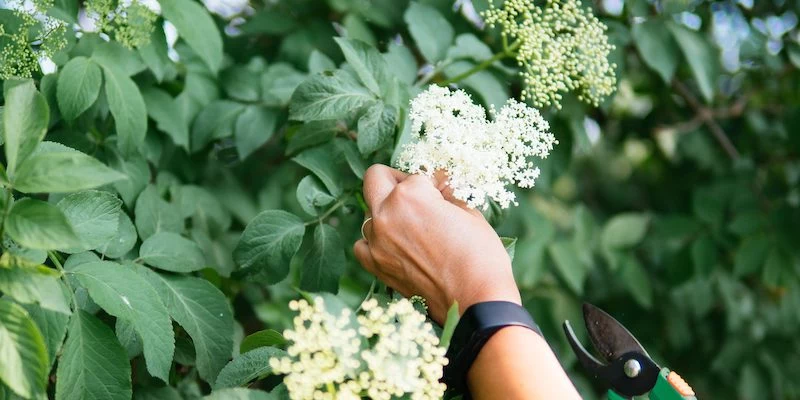
A 24-hour steep will be light and delicate. Personally, I think 36-48 hours is the sweet spot for a really rich, full flavor. I usually give it a sniff and a tiny taste after the first day to decide. Don’t go past 48 hours, though, or it might start to ferment.
Step 4: Strain and Bottle
This is how you get that beautiful, clear final product. Line your sieve with muslin cloth and set it over a large, clean bowl. Carefully ladle the mixture in and just let it drip through on its own. It’s tempting to squeeze the cloth to get every last drop, but don’t! Squeezing pushes out fine sediment and will make your cordial cloudy.
Once it’s all dripped through, use a funnel to pour the cordial into your sterilized bottles. Seal them tightly and store them in a cool, dark place. A properly made batch will last for several months unopened. Once you do open a bottle, keep it in the fridge and enjoy it within a few weeks.
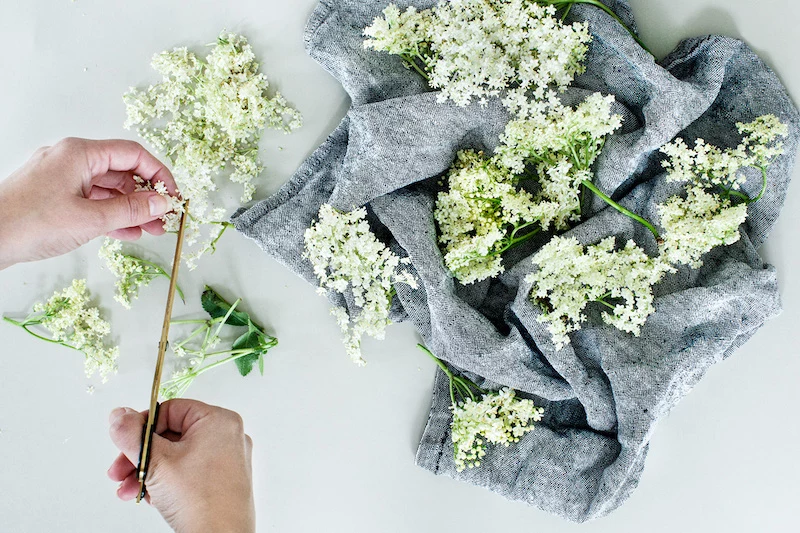
A Quick Guide to Sterilizing Bottles
Don’t skip this! It’s essential for safety and shelf life. You have two easy options:
- The Oven Method: Preheat your oven to 275°F (130°C). Wash your bottles and their lids in hot, soapy water, but don’t dry them. Place the wet bottles upright on a baking sheet and put them in the oven for 15-20 minutes. If you’re using rubber-sealed swing-top bottles, boil the rubber seals separately, as the oven can damage them.
- The Dishwasher Method: If you have a dishwasher with a ‘sanitize’ cycle or a high-heat setting, this is the easiest way. Just run the bottles and lids through a hot cycle and let them air dry completely before filling.
Other Ways to Make Elderflower Syrup
The classic cold steep is my favorite, but there are other ways to do it, each with different results.
For the Impatient: The Hot Infusion Method
This is a much quicker way to get your fix. You make the syrup, but instead of letting it cool, you pour the hot liquid directly over the flowers, lemons, and citric acid. Let it steep for 24 hours, then strain. The upside? It’s faster and has less risk of fermenting. The downside, in my opinion, is that the flavor isn’t quite as fresh or complex. The heat gives it a slightly ‘stewed’ taste. It’s a fine method, but cold infusion wins on quality.
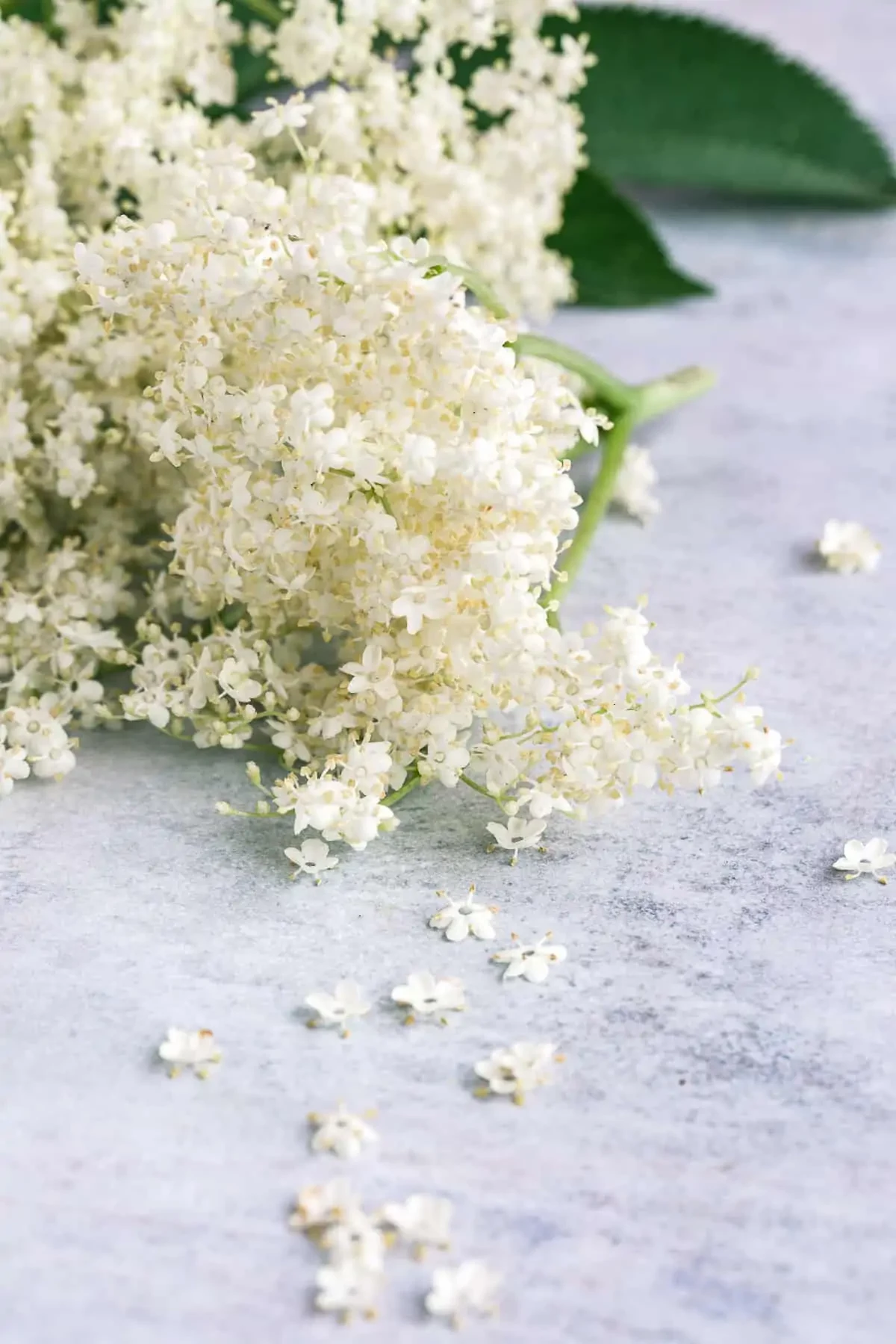
For the Health-Conscious: Honey-Based Syrup
If you’re avoiding refined sugar, you can use honey. Use about 2.2 lbs (1 kg) of a light, mild honey for every liter of water. Gently warm them together—don’t boil, as high heat can ruin the good stuff in raw honey. Let it cool completely before adding the flowers and lemons. One HUGE caveat: this version is NOT shelf-stable. It must be stored in the fridge and used within a couple of weeks.
Troubleshooting and Taking It Further
Even with the best instructions, things can sometimes go sideways. Here are some common problems and how to fix them:
- My cordial is brown. This usually means it oxidized or you used a reactive metal pan (like aluminum or copper). Stick to stainless steel, and make sure the flowers stay submerged during the steep.
- It tastes weak. You probably needed more flowers, or you picked them right after it rained. Just make a note to use more next time!
- It’s fizzy or smells boozy. Uh oh, it has started to ferment. This happens if you didn’t use enough sugar/acid, let it steep too long in a warm room, or your bottles weren’t perfectly sterilized. If it’s just a little bubbly, pop it in the fridge and use it up fast. If it smells strongly of alcohol, it’s best to toss it.
- There’s mold on top. This is a sign of contamination, and the batch needs to be thrown out, no questions asked. It means something wasn’t clean enough along the way.
Lesser-Known Trick: Instant Elderflower Iced Tea
Can’t wait two days? For a super quick and refreshing drink, just drop a few fresh elderflower heads into a big jug of cold water with some lemon slices. Let it sit in the fridge for a couple of hours. It won’t be as intense as cordial, but it’s absolutely delicious on a hot day.
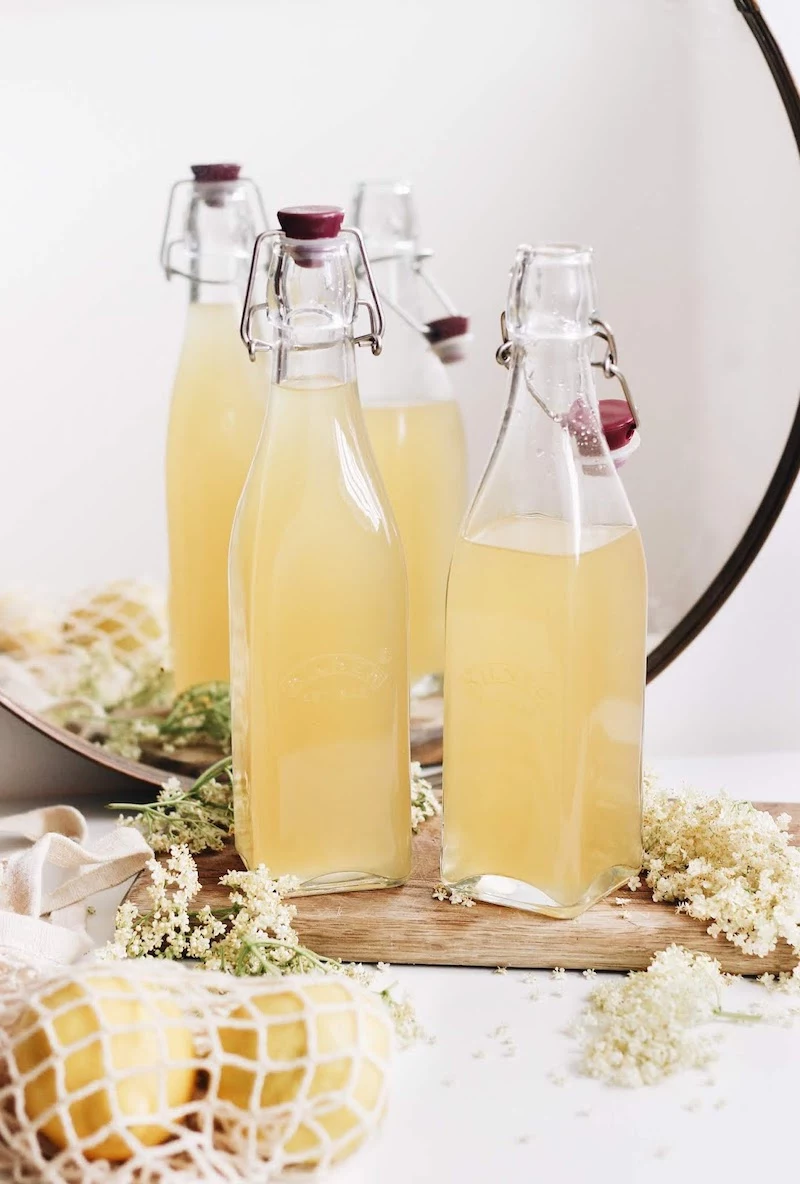
Final Words of Caution
Working with wild plants is incredibly rewarding, but you have to be respectful and cautious. Let me say it one more time:
- Identification is everything. Be 100% sure you’re picking from the right tree. When in doubt, leave it out.
- Know what’s edible. Only the flowers and fully ripe, cooked elderberries are safe to eat. All other parts of the plant—leaves, stems, roots, and unripe berries—are toxic. So, trim those green stalks off your flowers!
- Allergy check. Elderflower is loaded with pollen. If you have seasonal allergies, you might react. Try just a small amount first to be safe.
- Preservation is science. For a shelf-stable cordial, you must use the right amount of sugar and acid and sterilize everything properly. If you change the recipe, it likely needs to be refrigerated.
There you have it. Making elderflower cordial is a beautiful tradition that really connects you to the seasons. It’s part foraging, part science, and part kitchen craft. Follow these steps, pay attention to the details, and you’ll be able to bottle that perfect taste of early summer.
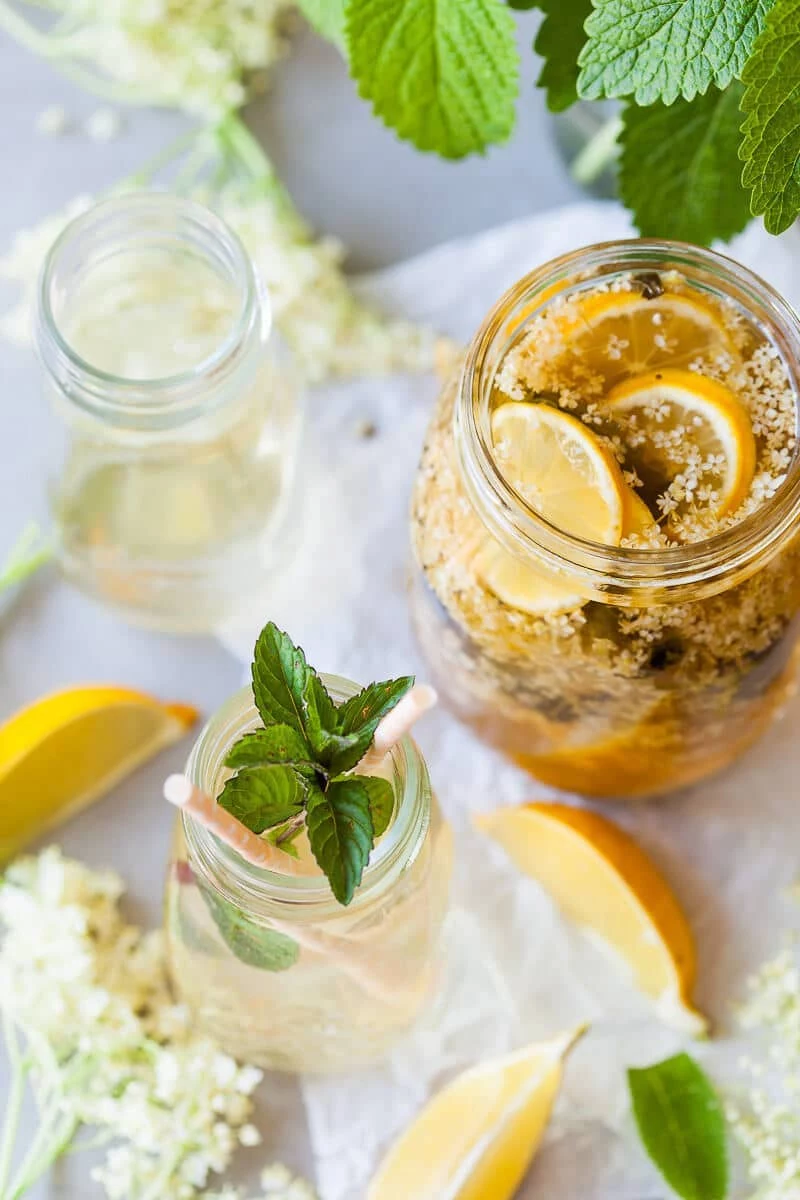
Inspirational Gallery
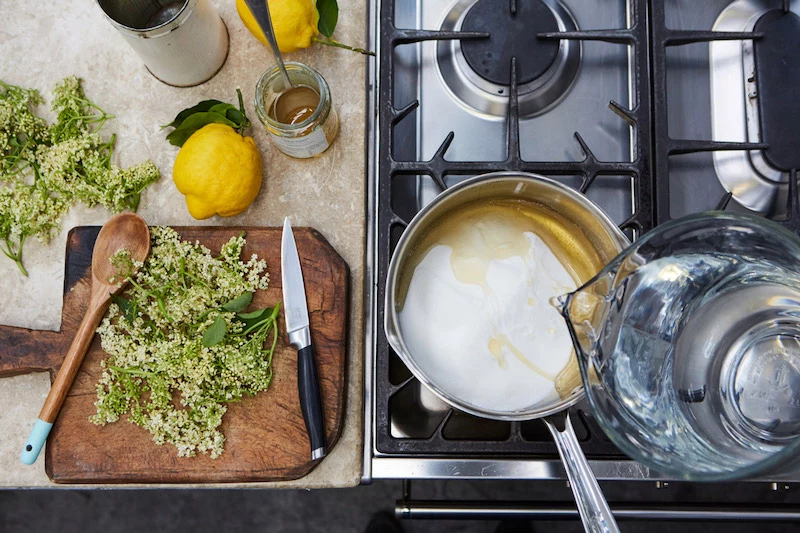
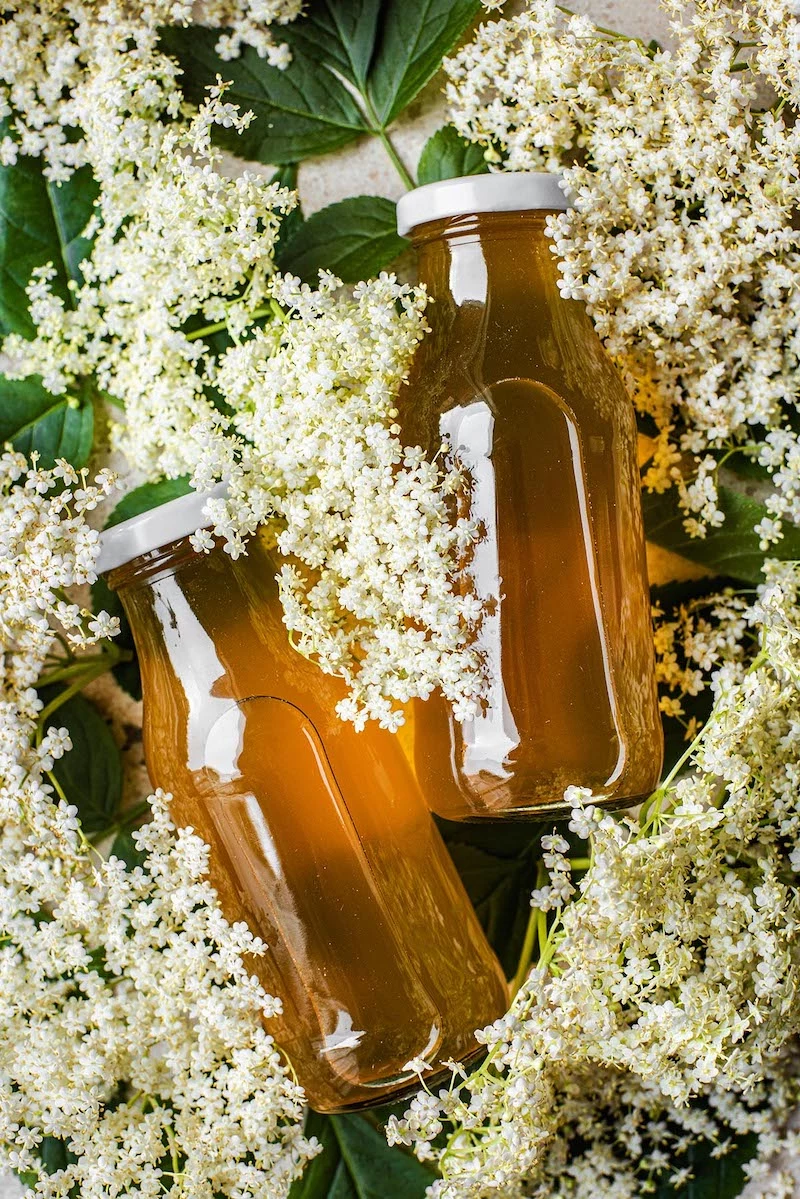
Why is citric acid so essential in the recipe? Can I just use lemon juice?
While lemon juice adds a wonderful fresh zest, citric acid is the unsung hero of a great cordial. It plays two key roles: firstly, it’s a powerful preservative, drastically lowering the pH to prevent bacteria and mould, ensuring your cordial lasts for months. Secondly, it provides a unique, sharp ‘sherbet-like’ tang that brightens the delicate floral flavour of the elderflower without overpowering it, something lemon juice alone can’t quite replicate. You can find it easily in powder form at most pharmacies, home-brewing shops, or online baking suppliers.
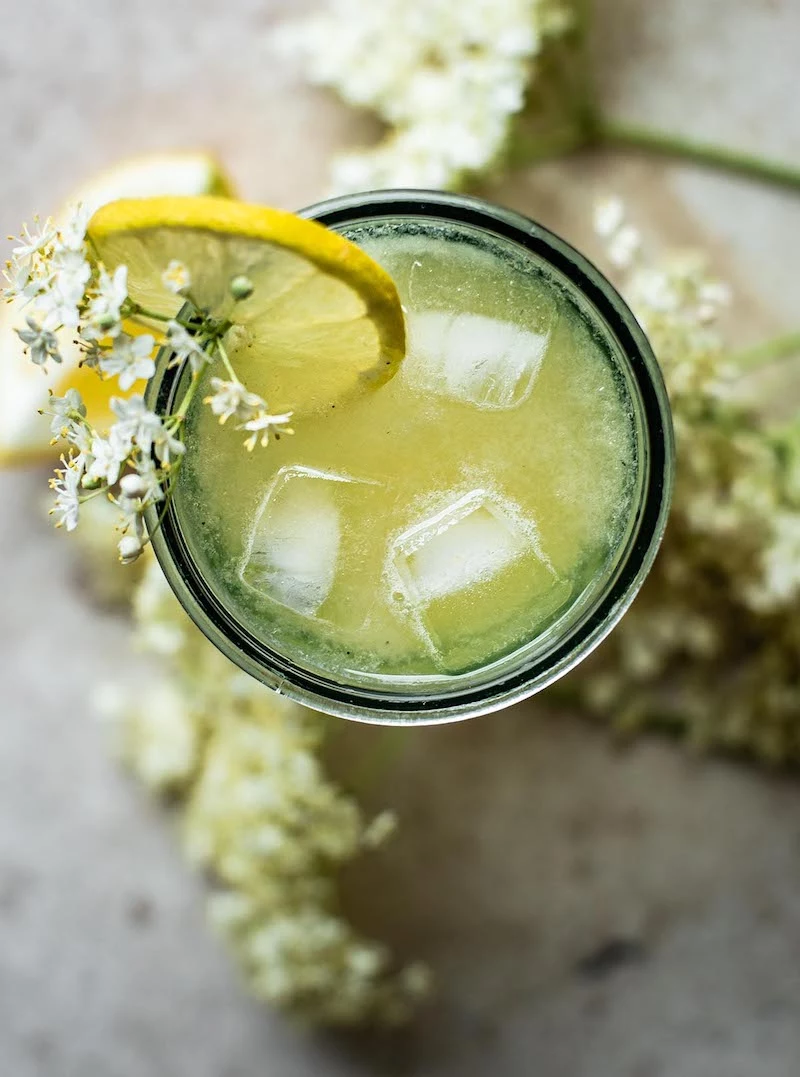
For centuries, elder was revered as a ‘complete medicine chest’ for country folk, with uses for almost every part of the plant.
This isn’t just folklore. Modern science is catching up, with studies investigating elderflower’s anti-inflammatory and antioxidant properties. So, that delicious glass of cordial might be doing more than just quenching your thirst; it’s a sip of a long and respected herbal tradition.

The golden rule of foraging: harvest with respect. Never strip a single tree or patch of all its blossoms. A good guideline is to take no more than a quarter of the flowers from any one bush. This leaves plenty for the pollinators and ensures the tree can later produce a healthy crop of elderberries, a vital autumn food source for birds and other wildlife.
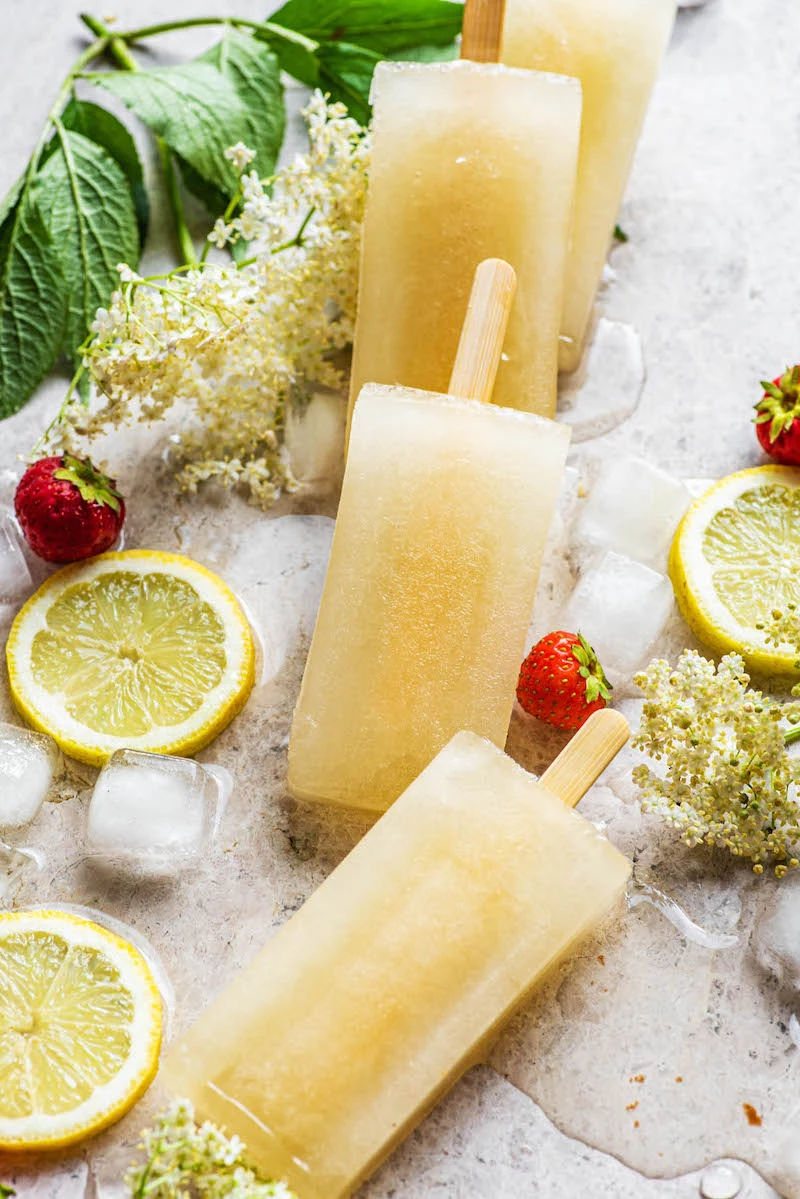
- A vibrant, ruby-blush hue in the bottle.
- A subtle tartness that complements the sweet floral notes.
- An unexpected, sophisticated flavour profile.
The secret? Add a few stalks of early-season rhubarb, chopped into fine pieces, to your infusion. It steeps alongside the elderflowers, lending its colour and a gentle, fruity sharpness that transforms your cordial into a signature ‘Elderflower & Rhubarb’ creation.
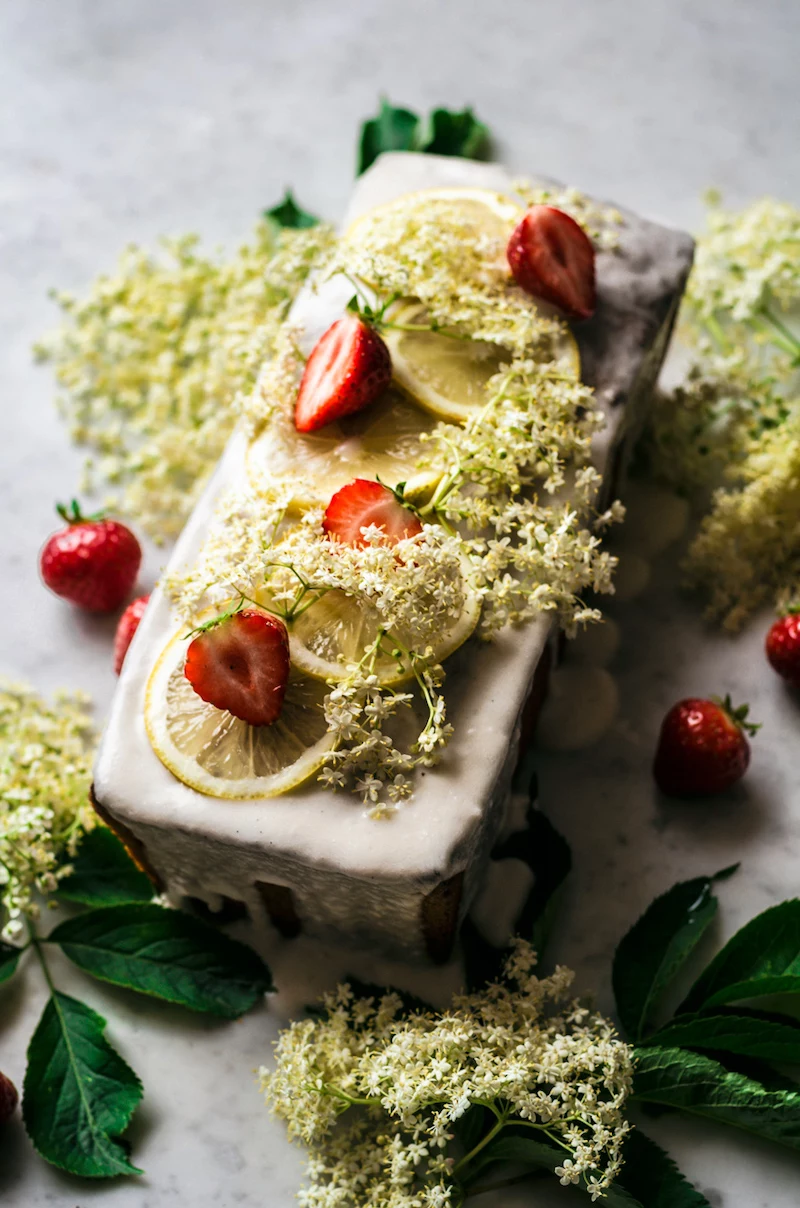
Granulated Sugar: Your go-to for purity. It creates a crystal-clear, pale golden cordial where the delicate, muscat-grape aroma of the elderflower is the undisputed star.
Golden Caster Sugar: For a richer cordial. This unrefined sugar lends a subtle, light caramel note and a deeper amber colour, adding a layer of warm complexity that works beautifully in cocktails.
For your first batch, we recommend granulated to truly appreciate the pure flower essence.
Thinking of gifting your liquid gold? Presentation is everything.
- Seek out elegant glass swing-top bottles from brands like Kilner or Bormioli Rocco for a classic, reusable option.
- Design and print simple, rustic labels on kraft paper, noting the ‘vintage’ (year of making).
- For a final flourish, tie a small tag with serving suggestions around the bottle neck using natural jute twine.










